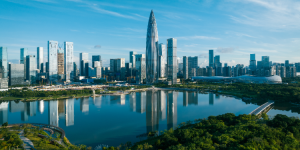
In an attempt to boost immigration numbers, the Canadian government has announced a new series of measures to encourage temporary foreign workers and international students to convert their residence status to permanent. On September 20, the Immigration Minister unveiled these measures in a “five-pillar plan.”
Five-pillar immigration plan
In May 2022, the Member of Parliament Randeep Sarai put forward a motion for the government to devise a new economic immigration plan for workers of all skill levels. In response, the Ministry of Immigration, Refugees and Citizenship, led by Minister Sean Fraser, worked on a five-pillar plan that was made public in late September. Indeed, back in December 2021, the minister had issued a mandate letter promising to “expand pathways to permanent residence” – his colleague MP Sarai's motion only reminded him to follow on his promise.
The five pillars can be summarized as follows:
- Pillar 1 - Meet the increased immigration goals for 2023-2024.
According to the Immigration Levels Plan, Canada should welcome 447,055 new immigrants in 2023 and 451,000 in 2024. The country is on track to meet its 2022 goal of 431,645 new immigrants – it is even likely to surpass it. As for the immigration goal for 2025, it will be announced in November this year.
- Pillar 2 – Reform the Express Entry system.
For the record, this pathway has a processing time of six months or less. The reform will affect the points-awarding criteria to be eligible for Express Entry, giving more points to in-Canada education and work experience, language proficiency and having a job offer. Awarding more points for a Canadian education will encourage international students in the country to stay on after graduating. The reform also affects the preference given to certain high-demand occupations on the National Occupation Classification (NOC) for Express Entry. Sixteen new occupations will be eligible for Express Entry, while three will lose their eligibility.
- Pillar 3 – Help workers in high-demand fields to transition from temporary to permanent visas.
An updated National Occupation Classification (NOC) will be introduced in November to classify which occupations are in high demand. As reported by the legal firm Canadim, the new classification will also replace skill level by the TEER rubric: training, education, experience and responsibilities. Some high-demand occupations are doctors, nurses, engineers, architects, human resource officers and welders.
Other aspects of this pillar are improving pilot programs that support the transition of caregivers and agri-food workers to permanent residence, as well as providing better information to newcomers so that they can apply more easily for federal, provincial or territorial permanent immigration programs.
- Pillar 4 – Increase the immigration of French speakers to regions beyond Quebec, and create a new Municipal Nominee Program.
For the record, French is the second official language of Canada, alongside English. French speakers are concentrated in the province of Quebec, but their language skills are also needed in other provinces. This is great news for prospective immigrants from France and francophone Africa. As for the Municipal Nominee Program, it was first introduced in 2019 and allows smaller, underserved cities to welcome permanent immigrants.
- Pillar 5 – Digitizing and modernizing the immigration system to improve visa-processing capacity and speed.
This is necessary to solve the terrible backlog of nearly 3 million visas that Canada is facing. This backlog keeps growing, as visa applicants have increased by nearly 60% in 2022. Select visas, like the Provincial Nominee visa and Quebec-selected skilled workers visa, have already started accepting 100% online applications this year. Some visa interviews are also being shifted online.
Why does Canada need more permanent immigrants?
All G7 countries are currently experiencing labor shortages, but Canada is experiencing the most acute shortage of them all. The country has a declining birth rate and a rising population of retirees, and it has historically depended on a constant inflow of new migrants to run the economy. The border closures during Covid affected the entry of new international students and immigrants. In addition, the pandemic increased the need for workers in healthcare, aged care and social assistance.
Although Canada has a low unemployment rate in 2022 (it has hovered around 5% throughout the year), it still has 136,100 vacancies as of September 2022, according to Statistics Canada. While in 2016, there were 113 hires for every 100 vacancies, in 2022, there are only 44 newly hired employees for every 100 vacancies. Badly in need of economic immigrants to fill the gap, the country has unveiled measure after measure this year. The latest five-pillar plan follows other measures like extending the validity of the parents and grandparents visa to 5 years and exempting temporary visa holders already in Canada from medical exams.
Prospective expats who've long dreamed of moving to Canada – now is the perfect time to do so. International students who want to work abroad after graduating should also seriously consider Canada as a destination. Indeed, the five-pillar plan is also targeting their demographic. There are currently around 350,000 international students in Canada, and they all represent potential workers for the Canadian economy.
Some provincial government policies, however, can run counter to the federal government's plans. The premier of Quebec since 2018, François Legault, for instance, is against increasing immigration. He is set to seek reelection in October. His position is in conflict with the reality that the federal government has been granting an increasing number of Quebec employers permits to hire temporary foreign labor. The number of temporary migrant workers there grew by 133% from 2017 to 2021, even during the pandemic, reports CBC News. Many of them have been agricultural workers, laborers in food processing, machine operators and IT professionals.
Workers of the first three of the aforementioned categories are often mistreated – transitioning to permanent residence status would give them more solid human rights protection. In 2021, some had even protested in front of federal government offices in Montreal to petition for permanent residence, so that they might be protected while contributing to the economy on a more long-term basis. The new reforms of the five-pillar plan might make this more possible than ever.



















